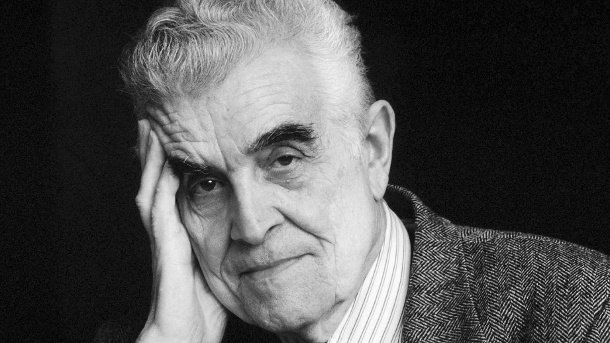I am reading Cynthia Haven’s excellent new biography of Rene Girard, and am reminded of his ground breaking work in the mystery of sacrifice and the scapegoat.
I first came across Girard when I was an oblate at Downside Abbey in England. The theologian monk Dom Sebastian Moore used to visit my room after Compline with a bottle of whiskey itching to talk theology and Girard. He was enthusing about him then, but it would be another decade or so before I actually got around to reading Girard. Cynthia Haven’s biography is renewing my interest in the man as well as his thought.
For those who are unfamiliar with his ideas, he analyzes original sin by pinning it to something he calls “mimetic desire”. This is a complex form of envy in which we begin by desiring what someone else has, but then move on to desire to be like that person. When our desire is frustrated we blame the other person for our unhappiness and then project our misery on them–blaming them for our unhappiness.
Once we have scapegoated the person we persecute, marginalize, exclude and finally torture and kill. This happens on both an individual level and a corporate level. Girard goes on to explain that in primitive societies this scapegoating action eventually becomes ritualized and religious sacrifice is the result, animals eventually being substituted for human sacrifice.
In his later work he shows how the death of Christ is not only the ultimate example of the scapegoating mechanism, but it is the sacrifice that ends sacrifice because Christ takes on the evil system and bursts it from the inside out. From the cross of Christ onward the task is to recognize the innocent victim and defend him rather than join in the lynch mob.
So far so good, but what I have yet to see is any connection between this and the liturgy of the Mass. I think this may be because in the last fifty years the element of sacrifice in the Mass has been downplayed.
I think this is a mistake. Girard taught that the ancient sacrificial systems were a ritualized way for societies to control the violence caused by mimetic desire which was always bubbling just below the surface in a society. The ritualized murder (first of humans, then of animal substitutes) channelled and controlled the violence giving it a properly sanctioned release.
What I have not found is any writer who meditates on how this still continues within the sacrifice of the Mass.
If Christ’s sacrifice on the cross was the sacrifice to end all sacrifices, then what is the sacrifice of the Mass?
It is an anamnesis a dynamic remembering of that once for all sacrifice. It is therefore a sacrifice of praise. It is Eucharist-thanksgiving. Thanksgiving for what? For the fact that by his once for all sacrifice the need for sacrifice is ended.
However, I think it is more than that. We rightly call the Mass a “sacrifice” because in remembering the once for all sacrifice of Christ we are also bringing that action into the present moment. We are still participating fully in that sacrifice even now in this present time. As such we are participating in a similar ritualized moment of atonement and redemption.
Girard was sometimes criticized because he seemed to teach that the theories of atonement–a righteous God demanding payment for sin and the Son of God paying the price–were at least outmoded and probably just wrong. Critics said he was therefore dismissing the reality and need for atonement.
I think that is a mis reading of Girard. Instead, as I understand it, Christ bursting the need for sacrifice from the inside out IS the atoning action. The scapegoating action was the root of sin that he eradicates, thus the truth that he is “the Lamb of God who takes away the sins of the world.” Deliverance from this original sin is the redemption of mankind and the dynamic remembering of this action in the Mass perpetuates and continues that eternal action applying its graces to those present in the present moment.
By participating fully in the Mass therefore, we enter into the sacrifice that ends sacrifice. Our task therefore is to defend the victim, recognize the scapegoating and religious (and ideological) violence where it appears and stand up against it.
Finally, there is this: if we do recognize and stand up to the scapegoating in society we should be prepared to become the victim scapegoats ourselves for this will surely be the result. If you stand up to the tyrants and ideologues who scapegoat and persecute the victim, then you will be thrown in with the victims yourself.
And this is what we call a martyr–one who has so identified with the sacrifice that ends all sacrifice that he or she becomes a little Christ–thus perpetuating by their own sacrifice the very action that abolishes sacrifice.







Leave A Comment
You must be logged in to post a comment.